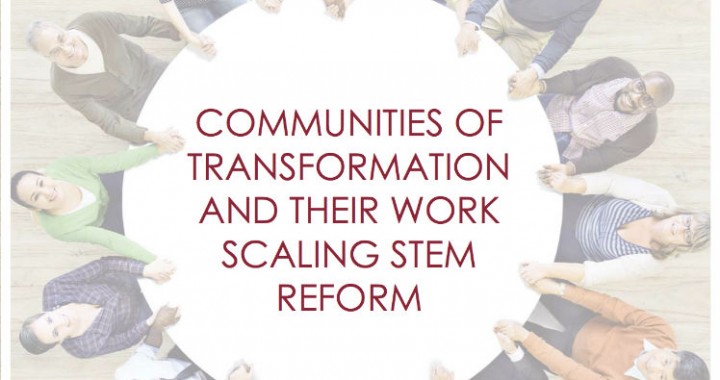A recent study by the Pullias Center for Higher Education at the University of Southern California identified SENCER as one of four communities of transformation in STEM reform. Communities of transformation, as defined in the study, are variants of communities of practice, but also include characteristics of social networks where members share “values, preferences, goals, or ideas.” The communities that the study examined were SENCER, Project Kaleidoscope (PKAL), The Process Oriented Guided Inquiry Learning Project (the POGIL Project), and The BioQUEST Curriculum Consortium.
The study is a part of Achieving Scale for STEM Reform, a four-year grant funded by the Transforming Undergraduate Education in Science (TUES) program within the Department of Undergraduate Education of the National Science Foundation (NSF DUE-1226242). Adrianna Kezar, professor in the Rossier School of Education and co-director of the Pullias Center, served as the Principal Investigator on the study, and Sean Gehrke, now director of institutional planning, research, and assessment at Lewis-Clark State College, was co-Principal Investigator.
Interviews, surveys, and document analyses were conducted to further define communities of transformation, determine their common traits, and to understand their benefits for respective members. The study found that the the three defining elements of communities of transformation, which set them apart from communities of practice and social networks are:
- A compelling philosophy;
- Living integration of the philosophy throughout activities and communications, creating a new world of practice;
- A network of peers to break the isolation, brainstorm revising practices, and help sustain changes once an individual returns to the status quo environment
The survey and subsequent analysis showed that participation in a community of transformation broadly led to improved practice, reenergization, and enhanced credibility in reform efforts among faculty.
The study also discussed the lifecycle of communities of transformation, from their formative years to their coalescion, maturity, and eventual evolution. The study also outlined some recommendations and future considerations for the communities moving forward. This report serves as additional evidence of the effectiveness of SENCER’s methods, and our role as a community of transformation will be a major theme of the upcoming SENCER Summer Institute.
The report is available in its entirety here.
Photo credit: Pullias Center for Higher Education

